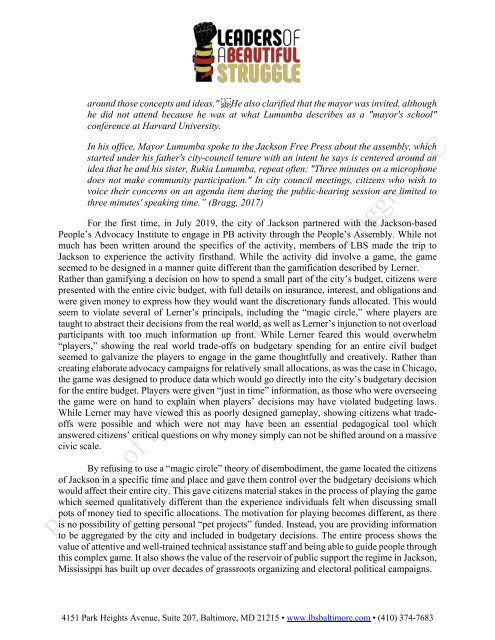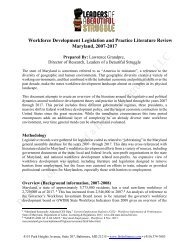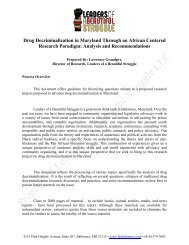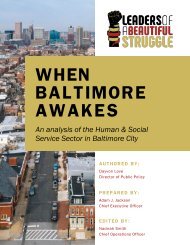Models for Participatory Budgeting
Participatory Budgeting (PB) has become a schizophrenic term, used as easily by neoliberal technocrats as it has been used by leftists seeking redistribution of wealth. As such, examining the function of any PB scheme with a critical lens is essential to determine whether it is an attempt to redistribute resources and power, or a tool to manufacture consent for the status quo and undermine/co-opt forces of resistance. While the goal of this analysis is not to delve deeply into the technical minutiae around the different processes, there is one clarification which may be useful to make at the beginning of the section. Much of what is often called PB could also be considered “participatory urban planning.” The distinction is that while budgeting denotes an explicit focus on allocating a discrete set of funds, planning seeks to take a more comprehensive survey of people's feelings, needs and problems, and generates a list of interventions based upon that feedback. Many straddle the line and include elements of both. This section will focus on processes which allocate revenue directly, will help explain why some interventions (Baltimore City Children and Youth Fund) will receive more direct attention and others (New York Cities Participatory Planning sessions) might receive less.
Participatory Budgeting (PB) has become a schizophrenic term, used as easily by neoliberal technocrats as it has been used by leftists seeking redistribution of wealth. As such, examining the function of any PB scheme with a critical lens is essential to determine whether it is an attempt to redistribute resources and power, or a tool to manufacture consent for the status quo and undermine/co-opt forces of resistance.
While the goal of this analysis is not to delve deeply into the technical minutiae around the different processes, there is one clarification which may be useful to make at the beginning of the section. Much of what is often called PB could also be considered “participatory urban planning.” The distinction is that while budgeting denotes an explicit focus on allocating a discrete set of funds, planning seeks to take a more comprehensive survey of people's feelings, needs and problems, and generates a list of interventions based upon that feedback. Many straddle the line and include elements of both. This section will focus on processes which allocate revenue directly, will help explain why some interventions (Baltimore City Children and Youth Fund) will receive more direct attention and others (New York Cities Participatory Planning sessions) might receive less.
- No tags were found...
Create successful ePaper yourself
Turn your PDF publications into a flip-book with our unique Google optimized e-Paper software.
around those concepts and ideas." He also clarified that the mayor was invited, although<br />
he did not attend because he was at what Lumumba describes as a "mayor's school"<br />
conference at Harvard University.<br />
In his office, Mayor Lumumba spoke to the Jackson Free Press about the assembly, which<br />
started under his father's city-council tenure with an intent he says is centered around an<br />
idea that he and his sister, Rukia Lumumba, repeat often: "Three minutes on a microphone<br />
does not make community participation." In city council meetings, citizens who wish to<br />
voice their concerns on an agenda item during the public-hearing session are limited to<br />
three minutes' speaking time.” (Bragg, 2017)<br />
For the first time, in July 2019, the city of Jackson partnered with the Jackson-based<br />
People’s Advocacy Institute to engage in PB activity through the People’s Assembly. While not<br />
much has been written around the specifics of the activity, members of LBS made the trip to<br />
Jackson to experience the activity firsthand. While the activity did involve a game, the game<br />
seemed to be designed in a manner quite different than the gamification described by Lerner.<br />
Rather than gamifying a decision on how to spend a small part of the city’s budget, citizens were<br />
presented with the entire civic budget, with full details on insurance, interest, and obligations and<br />
were given money to express how they would want the discretionary funds allocated. This would<br />
seem to violate several of Lerner’s principals, including the “magic circle,” where players are<br />
taught to abstract their decisions from the real world, as well as Lerner’s injunction to not overload<br />
participants with too much in<strong>for</strong>mation up front. While Lerner feared this would overwhelm<br />
“players,” showing the real world trade-offs on budgetary spending <strong>for</strong> an entire civil budget<br />
seemed to galvanize the players to engage in the game thoughtfully and creatively. Rather than<br />
creating elaborate advocacy campaigns <strong>for</strong> relatively small allocations, as was the case in Chicago,<br />
the game was designed to produce data which would go directly into the city’s budgetary decision<br />
<strong>for</strong> the entire budget. Players were given “just in time” in<strong>for</strong>mation, as those who were overseeing<br />
the game were on hand to explain when players’ decisions may have violated budgeting laws.<br />
While Lerner may have viewed this as poorly designed gameplay, showing citizens what tradeoffs<br />
were possible and which were not may have been an essential pedagogical tool which<br />
answered citizens’ critical questions on why money simply can not be shifted around on a massive<br />
civic scale.<br />
By refusing to use a “magic circle” theory of disembodiment, the game located the citizens<br />
of Jackson in a specific time and place and gave them control over the budgetary decisions which<br />
would affect their entire city. This gave citizens material stakes in the process of playing the game<br />
which seemed qualitatively different than the experience individuals felt when discussing small<br />
pots of money tied to specific allocations. The motivation <strong>for</strong> playing becomes different, as there<br />
is no possibility of getting personal “pet projects” funded. Instead, you are providing in<strong>for</strong>mation<br />
to be aggregated by the city and included in budgetary decisions. The entire process shows the<br />
value of attentive and well-trained technical assistance staff and being able to guide people through<br />
this complex game. It also shows the value of the reservoir of public support the regime in Jackson,<br />
Mississippi has built up over decades of grassroots organizing and electoral political campaigns.<br />
4151 Park Heights Avenue, Suite 207, Baltimore, MD 21215 • www.lbsbaltimore.com • (410) 374-7683









